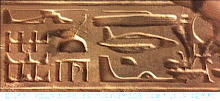
I was reading over the posts and realized that I left out the ways in which Black Holes become stars which is important because it has to do with the 7 forms of Matter.
The Mind of God condenses some of itself into Magnetism. In this stage, the Magnet, or, the Black Hole, cannot be detected. However, its affects on all the physical entities around it can be. This is because everything that enters its vicinity appears to disappear and be "sucked in." In reality, these things are not sucked in, instead, they are pulled toward the star by magnetic attraction, or, the pull of "gravity" (Gravity does not really exist. On this planet, gravity is mostly the the application of the earth's atmospheric pressure on the body, which is why, once you leave the atmosphere, gravity is not found. It is about magnetism).
In any case, to continue, because the star has not yet condensed further from its magnetic phase into its electric phase, and thus into light, and thus into Ether (which is required in order for light to be observed. Just as sound waves require air to travel, Light requires space or, ether), all the entities drawn toward the star suddenly become invisible because there is no light in the blackness of outer space for these entities to be seen. In other words, these magnetic stars form an area of complete blackness around themselves until their process nears completion.
Eventually, as condensation continues and ether is exerted, then the light of the star becomes visible. In the case of a planet (the first one in the universe only) created before the star, the light then emits electrical waves to that planet. In all other cases where the planets come after the sun, the sun begins to rotate on its axis as it continues to condense further, and it throws off gases (formed by the Ether) out into space, though they only go as far as the star's magnetic pull will allow.

Although the process is quite violent, eventually, these gases reach stability away from the star and condense further into liquids and solids, forming planets. The star, in the meantime, eventually stabilizes and stops condensing, and also stops throwing off gases. At this point, the entire star system becomes stable, although for a time, the planets are still forming.
And that is pretty much that. Any questions, just post 'em.
Hotep.











!["SO[U]L/ Shamush"](http://1.bp.blogspot.com/_D12CqvmBvdo/SXzEh7DvYuI/AAAAAAAAABA/oXOJnFas9Kk/S220/SO(U)L.jpg)





No comments:
Post a Comment